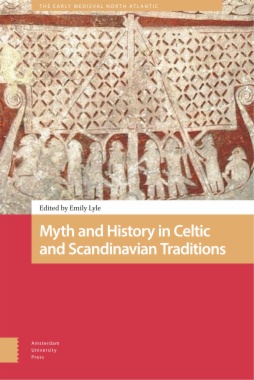Myth and History in Celtic and Scandinavian Traditions explores the traditions of two fascinating and contiguous cultures in north-western Europe. History regularly brought these two peoples into contact, most prominently with the viking invasion of Ireland. In the famous Second Battle of Mag Tuired, gods such as Lug, Balor, and the Dagda participated in the conflict that distinguished this invasion. Pseudohistory, which consists of both secular and ecclesiastical fictions, arose in this nexus of peoples and myth and spilled over into other contexts such as chronological annals. Scandinavian gods such as Odin, Balder, Thor, and Loki feature in the Edda of Snorri Sturluson and the history of the Danes by Saxo Grammaticus. This volume explores such written works alongside archaeological evidence from earlier periods through fresh approaches that challenge entrenched views.
- Cover
- Contents
- Preface
- Introduction
- Celtic Tradition
- 1. The Nature of the Fomoiri: The Dark Other in the Medieval Irish Imagination
- 2. Tuatha Dé and Fomoiri in Cath Maige Tuired
- 3. Exploring Cath Maige Tuired through the Concept of Hybridity
- 4. How Time Flies in the Cath Maige Tuired
- 5. The Idols of the Pagan Irish in the Medieval Literary Imagination
- 6. Myth as a Historical Resource: The Case of Orgain Denna Ríg (The Destruction of Dinn Ríg)
- 7. Hagiography as Political Documentation: The Case of Betha Beraigh (The Life of St Berach)
- Scandinavian Tradition
- 8. Baldr’s Achilles’ Heel? About the Scandinavian Three-God B-Bracteates
- 9. The Cult of Óðinn in the Early Scandinavian Warrior Aristocracy
- 10. Myth to History in Saxo
- 11. The Scylding Dynasty in Saxo and Beowulf as Disguised Theogony
- 12. Loki the Slandered God?� Selective Omission of Skaldic Citations in Snorri Sturluson’s Edda
- 13. Ymir, Baldr, and the Grand Narrative Arc of Mythological History
- Index
- List of Tables
- Table 10.1 A comparison of narratives in Thórsdrápa, Saxo, and Snorri
- Table 11.1. The four-generation divine model showing Helga/Helgi as the father or grandfather of Hroðulf/Rolf Krake
- Table 11.2. The effect of the inclusion of the Yrsa generation on the parallels between the Danish and Geatish royal lines
- Table 11.3. Illicit intercourse present in Saxo and absent from Beowulf
- Table 11.4. The Old Norse gods in Snorri who have equivalents in the postulated theogonic sequence in Saxo
- List of Images
- Figure 8.1 The 3-Figure B-Bracteates Skovsborg (IK 165).
- Figure 8.2 Fakse (IK 51, 1).
- Figure 8.3 Killerup (IK 51, 2).
- Figure 8.4 Denmark (IK 40).
- Figure 8.5 Denmark (IK 39).
- Figure 8.6 Zagórzyn (IK 20).
- Figure 8.7 Gummerup (IK 66).
- Figure 8.8 Gudme (IK 51, 3).
- Figure 8.9 Fuglsang/Sorte Muld (IK 595).
- Figure 8.10 Snogskilden (IK 646), drawn by theauthor.
- Figure 8.11 Hvorslevgård (IK 675), drawn by the author.
- Figure 8.12 Dalshøj (IK 685), drawn by the author.
- Figure 9.1 The distribution of theophoric place names in Scandinavia containing the name of the god Óðinn; open circles are uncertain. Based on Brink, ‘How Uniform was the Old Norse Religion?’, p. 112, with locations of sites using salr (‘hall’) added. By
- Figure 9.2 The ‘Helping Figure’, from Greta Arwidsson, Båtgravarna i Valsgärde, p. 58.
Permission requested from Statens Historiska Museer.
- Figure 9.3 The ‘Torslunda Dancer’, from Knut Stjerna, Hjälmar och svärd i Beovulf, p. 103.
By permission of Statens Historiska Museer.
- Figure 13.1. The genealogy of Óðinn and his brothers according to the Prose Edda, drawn by the author.

